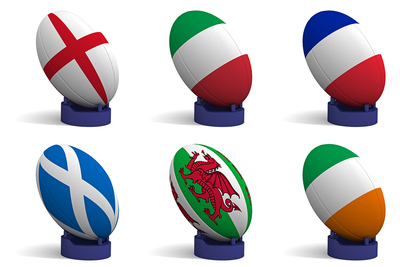
The Six Nations is the pinnacle of the northern hemisphere international rugby scene. England, Scotland, Ireland, Wales, France and Italy take part, pitting the strongest European nations against each other over a gruelling six week schedule.
During the tournament the teams play each other just once, playing either three at home and two away or two at home and three away, a pattern which alternates each year. At the time of writing the current sponsors are Guinness, but the tournament has seen several different backers over the years including Natwest, RBS and Lloyds TSB.
Six Nations Recent Winners
| Year | Winner | Runner Up | Top Points Scorer |
|---|---|---|---|
| 2024 | Ireland | France | Thomas Ramos (France) - 63 |
| 2023 | Ireland | France | Thomas Ramos (France) - 84 |
| 2022 | France | Ireland | Marcus Smith (England) - 71 |
| 2021 | Wales | France | Johnny Sexton (Ireland) - 65 |
| 2020 | England | France | Romain Ntamack (France) - 57 |
| 2019 | Wales | England | Owen Farrell (England) - 59 |
| 2018 | Ireland | Wales | Maxime Machenaud (France) - 50 |
| 2017 | England | Ireland | Camille Lopez (France) - 67 |
| 2016 | England | Wales | Owen Farrell (England) - 69 |
| 2015 | Ireland | England | George Ford (England) - 75 |
| 2014 | Ireland | England | Jonathan Sexton (Ireland) - 66 |
| 2013 | Wales | England | Leigh Halfpenny (Wales) - 74 |
| 2012 | Wales | England | Leigh Halfpenny (Wales) - 66 |
| 2011 | England | France | Toby Flood (England) - 50 |
| 2010 | France | Ireland | Stephen Jones (Wales) - 63 |
| 2009 | Ireland | England | Ronan O'Gara (Ireland) - 51 |
| 2008 | Wales | England | Jonny Wilkinson (England) - 50 |
| 2007 | France | Ireland | Ronan O'Gara (Ireland) - 82 |
| 2006 | France | Ireland | Ronan O'Gara (Ireland) - 72 |
| 2005 | Wales | France | Ronan O'Gara (Ireland) - 60 |
| 2004 | France | Ireland | Stephen Jones (Wales) - 55 |
| 2003 | England | Ireland | Jonny Wilkinson (England) - 77 |
| 2002 | France | England | Gerald Merceron (France) - 80 |
| 2001 | England | Ireland | Jonny Wilkinson (England) - 89 |
| 2000 | England | France | Jonny Wilkinson (England) - 78 |
Format & Fixtures
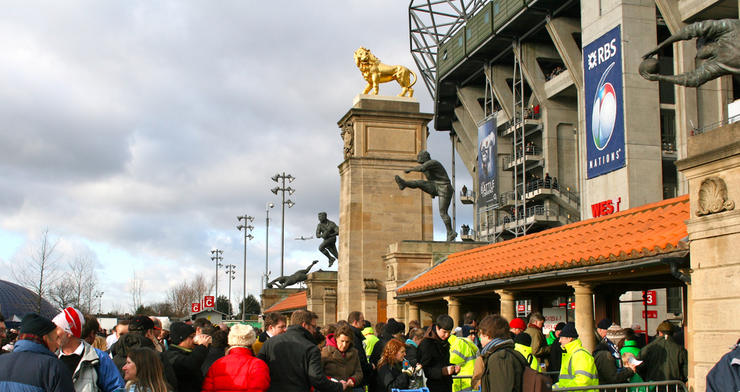
During the Six Nations, you will see that each team plays against each other just once. This creates a total of 15 games per tournament and the winner is the one with the most points at the end of the five matchweeks.
Each country will nominate one stadium to host all their games throughout each Six Nations. This can change year on year, but must remain constant throughout each campaign. As teams only play five matches (once against each nation) it means that an uneven number of home and away fixture will be played. So, some teams will play at home twice and away three times whilst others will get three home games and two away games.
To even things out, the games are rotated home and away for each year of tournament. For example, if Scotland play Ireland at home one year, the next they will play them away, and so on. So, with some years teams will get a home advantage and then other years they will not.
In 2017 the points structure was revamped in order to encourage more expansive, attacking rugby. The original layout was 2 points for a win, 1 for a draw and 0 for a loss. Now you will get 4 points for a win, plus a bonus point if you manage to score 4 or more tries. Also, losing sides are able to grab bonus points as well, again if they score 4 or more tries and another point if they are within 7 points of the winning team. Two points are awarded for a draw.
The fixtures for the latest Six Nations tournament are shown below.
England | Scotland | Wales | Ireland | France | Italy
England’s 2024 Six Nations Fixtures
| Round | Opponent | Date | Time | Venue |
|---|---|---|---|---|
| 1 | Italy | Saturday 3rd February | 14:15 | Stadio Olimpico, Rome |
| 2 | Wales | Saturday 10th February | 16:45 | Twickenham, London |
| 3 | Scotland | Saturday 24th February | 16:45 | Murrayfield, Edinburgh |
| 4 | Ireland | Saturday 9th March | 16:45 | Twickenham, London |
| 5 | France | Saturday 16th March | 20:00 | Parc Olympique Lyonnais, Lyon |
Scotland’s 2024 Six Nations Fixtures
| Round | Opponent | Date | Time | Venue |
|---|---|---|---|---|
| 1 | Wales | Saturday 3rd February | 16:45 | Principality Stadium, Cardiff |
| 2 | France | Saturday 10th February | 14:15 | Murrayfield, Edinburgh |
| 3 | England | Saturday 24th February | 16:45 | Murrayfield, Edinburgh |
| 4 | Italy | Saturday 9th March | 14:15 | Stadio Olimpico, Rome |
| 5 | Ireland | Saturday 16th March | 16:45 | Aviva Stadium, Dublin |
Wales’ 2024 Six Nations Fixtures
| Round | Opponent | Date | Time | Venue |
|---|---|---|---|---|
| 1 | Scotland | Saturday 3rd February | 16:45 | Principality Stadium, Cardiff |
| 2 | England | Saturday 10th February | 16:45 | Twickenham, London |
| 3 | Ireland | Saturday 24th February | 14:15 | Aviva Stadium, Dublin |
| 4 | France | Sunday 10th March | 15:00 | Principality Stadium, Cardiff |
| 5 | Italy | Saturday 16th March | 14:15 | Principality Stadium, Cardiff |
Ireland’s 2024 Six Nations Fixtures
| Round | Opponent | Date | Time | Venue |
|---|---|---|---|---|
| 1 | France | Friday 2nd February | 20:00 | Stade Vélodrome, Marseille |
| 2 | Italy | Sunday 11th February | 15:00 | Aviva Stadium, Dublin |
| 3 | Wales | Saturday 24th February | 14:15 | Aviva Stadium, Dublin |
| 4 | England | Saturday 9th March | 16:45 | Twickenham, London |
| 5 | Scotland | Saturday 16th March | 16:45 | Aviva Stadium, Dublin |
France’s 2024 Six Nations Fixtures
| Round | Opponent | Date | Time | Venue |
|---|---|---|---|---|
| 1 | Ireland | Friday 2nd February | 20:00 | Stade Vélodrome, Marseille |
| 2 | Scotland | Saturday 10th February | 14:15 | Murrayfield, Edinburgh |
| 3 | Italy | Sunday 25th February | 15:00 | Stade Pierre-Mauroy, Lille |
| 4 | Wales | Sunday 10th March | 15:00 | Principality Stadium, Cardiff |
| 5 | England | Saturday 16th March | 20:00 | Parc Olympique Lyonnais, Lyon |
Italy’s 2024 Six Nations Fixtures
| Round | Opponent | Date | Time | Venue |
|---|---|---|---|---|
| 1 | England | Saturday 3rd February | 14:15 | Stadio Olimpico, Rome |
| 2 | Ireland | Sunday 11th February | 15:00 | Aviva Stadium, Dublin |
| 3 | France | Sunday 25th February | 15:00 | Stade Pierre-Mauroy, Lille |
| 4 | Scotland | Saturday 9th March | 14:15 | Stadio Olimpico, Rome |
| 5 | Wales | Saturday 16th March | 14:15 | Principality Stadium, Cardiff |
Venues
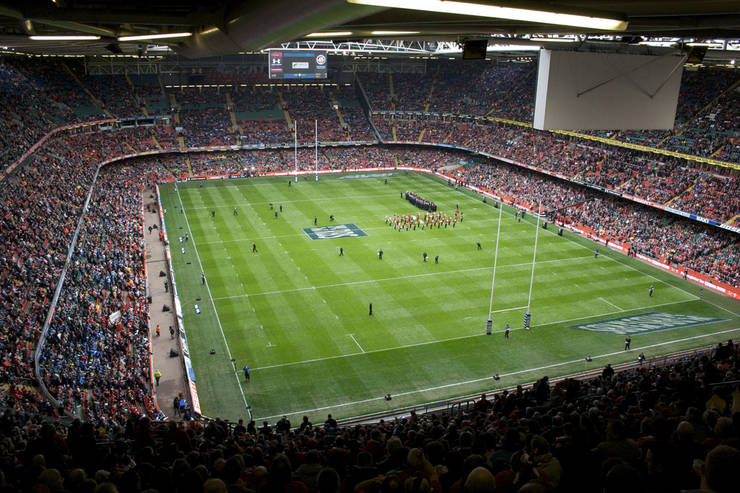
Each nation has a host stadium where all of their home matches is played. Due to the increasing popularity of the sport and the tournament you can expect these games are sold out even though the capacity in each stadium is huge.
The largest venue for a single match at the six Nations is Twickenham, home of England. The stadium holds an impressive 82,000, closely followed by the Stade de France, with 81,338. The smallest of the six is the newest addition to the fold in Ireland, the Aviva Stadium, with a capacity of just over 51,000. Whilst Italy are the newest addition to the Six Nations, the popularity has meant they needed to move out of their original home of the Stadio Flaminio to allow for more fans, switching to the Stadio Olimpico in Rome. For the 2024 tournament, France will play at alternative venues due to the Stade de France’s preperations for the upcoming Olympic Games.
Six Nations Stadiums & Capacities
| Country | Stadium | Location | Capacity |
|---|---|---|---|
| England | Twickenham | West London | 82,000 |
| France | Stade de France | Saint-Denis, Paris | 81,338 |
| Wales | Principality Stadium | Central Cardiff | 74,500 |
| Italy | Stadio Olimpico | Foro Italico, Rome | 72,698 |
| Scotland | Murrayfield | West Edinburgh | 67,144 |
| Ireland | Aviva Stadium | Ballsbridge, Dublin | 51,700 |
Trophies & Accolades

Throughout the Six Nations there are actually quite a few side trophies that can be won by teams. Whilst the one that everyone wants is the Championship Trophy for the overall winner, some of them are played for and won with great pride and often been around for a long time now.
Championship Trophy
As we have mentioned, the key objective for each of the six countries is to win the Six Nations Championship Trophy. This is awarded to the team with the most points after all fifteen games have been played. If two or more teams have the same points total, points difference becomes the deciding factor (match points scored minus match points conceded). If this is also level, tries scored decides the champion. if this is also level the trophy is shared.
Grand Slam
The next main feat after the title is that of the Grand Slam. This is where the team that wins has done so beating every other team. The Grand Slam is actually pretty rare, but England are the most successful team when including the Home Nations and Five Nations, earning the accolade on 13 separate times throughout all formats of the championships. Wales currently sit second with 12 Grand Slam wins to their name.
Triple Crown
The Triple Crown is another hotly contested trophy that is played out between England, Ireland, Scotland and Wales. The winners of the trophy will be those who have beaten all the other teams and it will only be awarded if this happens. Often this trophy is never presented, but again, England are the most successful with 26 Triple Crowns to their name.
Calcutta Cup
The Calcutta Cup has been contested since 1879 and takes place between two of the oldest rivals in sport; England and Scotland. Over the 130 times that the cup has been played for it has again been dominated by England, with 71 wins to the Scots 44, with 16 draws. In 2018 Scotland won their first Calcutta Cup in 10 years which was their worst run with the cup ever but have won four in a row between 2021 and 2024.
Millenium Trophy
The Millennium Trophy is a fairly new addition to the fold, first being played in 1988 to celebrate Dublin’s millennial year. The Viking helmet trophy is probably the most competitive of all the trophies in the Six Nations, with 36 matches taking place in total, England winning 21 and Ireland winning 16.
Centenary Quaich
The Centenary Quaich takes place between Ireland and Scotland and has been running since 1989. There isn’t an awful lot of information on why the trophy was brought in, but Quaich means Celtic Drinking Vessel, and it’s this that is presented to the winning team. After 35 appearances between the two teams vying for this cup, the scores are currently edged by Ireland on 21 wins with Scotland six back on 14, with one game ending in a draw.
Giuseppe Garibaldi Trophy
The latest trophy to be added to the Six Nations is that of the Giuseppe Garibaldi Trophy. It was first brought in in 2007 and is the only trophy, other than that of the championship of course, that France and Italy play for. Over the 17 times that this trophy has been played for, France have won on 15 occasions with Italy winning just twice and the 2024 game finishing in a draw.
Statistics
Throughout the course of the Six Nations, the Five Nations and the Home Nations, as they were once called, England and Wales have been the two standout nations when it comes to success. England have won the Championship on 29 occasions, with Wales just one back with 28.
Since the introduction of the Six Nations though, things have been much closer, with Ireland, Wales and France sitting joint second on 6 wins each to England’s 7.
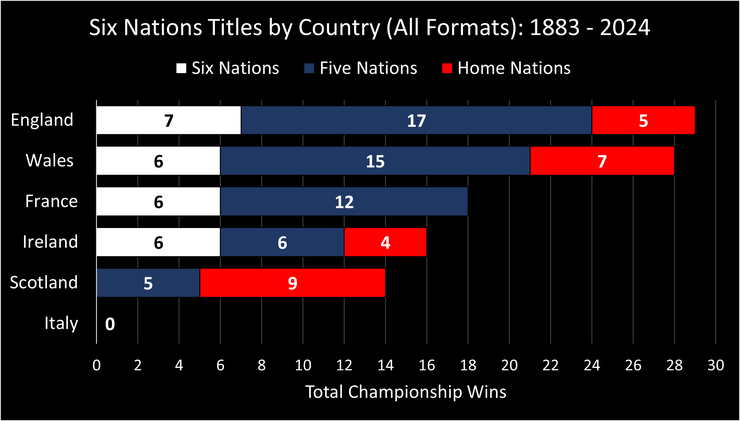
Grand Slams follow a similar theme, but it’s not England at the top of the pile for the Six Nations. With four Grand Slam titles Wales and France are jointly at the top, followed by Ireland next with three and England with two. But, Overall, since the start of all the competitions, it is England who are out on top with 13 Grand Slams to their name ahead of Wales with 12.
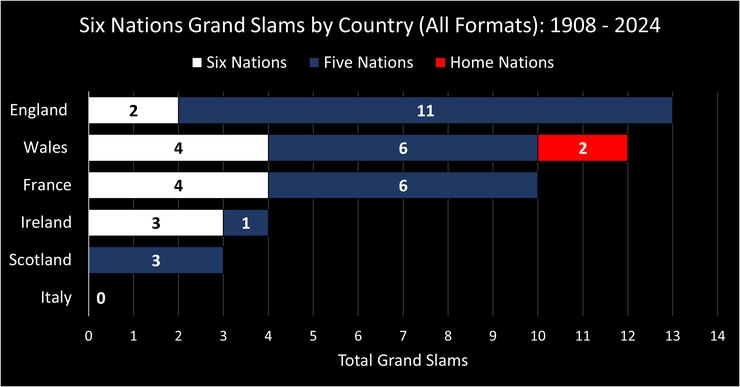
At the flip side of the tournament there is a special award for the team that finishes bottom of the group at the end of the tournament; the Wooden Spoon. No trophy is actually awarded for this and thankfully so as we doubt it would go down too well. The unfortunate ‘winners’ of this most often over the years is that of Ireland, who have 25 wooden spoons to their name across all formats. But, in the Six Nations era it’s Italy who have by far and away the most wooden spoons, with 18 to their name from just 25 Six Nations Championships.
Recent Tournaments
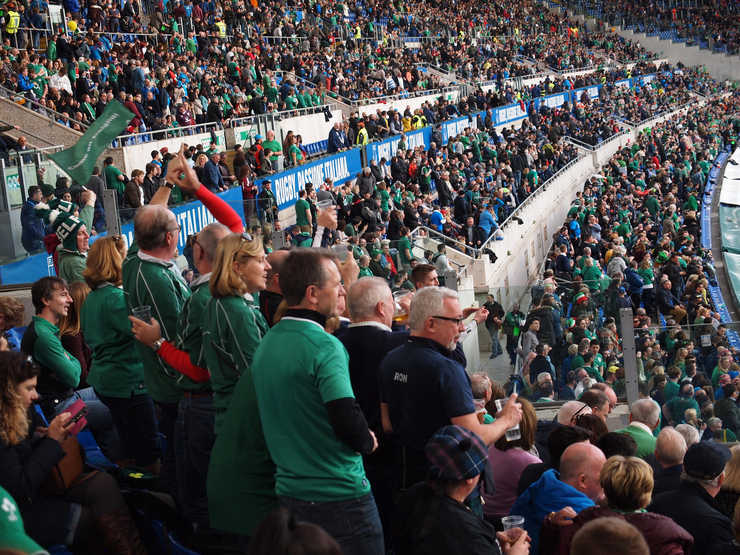
2024 Overview
Ireland retained their Six Nations crown in 2024 however were unable to become the first country to win back-to-back Grand Slams in the six team format in what was one of the most open tournaments in recent years. Ireland began with successive bonus point wins against France, Italy and Wales but lost to England at Twickenham thanks to a last-gasp Marcus Smith drop goal. They did however finish with a home victory against Scotland to win their sixth Six Nations trophy.
The story of the tournament for many was the performance of the much-criticised Italian side who secured their best ever points tally if not table position. The Italians drew 13-13 with France in round 3, but only narrowly missed out on victory after a Paolo Garbisi penalty struck the upright with the clock past 80 minutes. Garbisi’s ball had fallen off it’s tee but his penalty shot clock wasn’t frozen and the fly-half needed to rush the kick. They did bounce back from that disappointment by beating Scotland 31-29 in Rome before finishing with a 24-21 win against Wales in Cardiff to leave the winless Welsh with their first wooden spoon in 21 years.
2024 Six Nations Final Table
| Position | Team | Won | Draw | Lost | Scored | Conceded | Difference | Points (Bonus) |
|---|---|---|---|---|---|---|---|---|
| 1st | Ireland | 4 | 0 | 1 | 144 | 60 | +84 | 20 (4) |
| 2nd | France | 3 | 1 | 1 | 128 | 122 | +6 | 15 (1) |
| 3rd | England | 3 | 0 | 2 | 118 | 123 | -5 | 14 (2) |
| 4th | Scotland | 2 | 0 | 3 | 115 | 115 | 0 | 12 (4) |
| 5th | Italy | 2 | 1 | 2 | 92 | 126 | -34 | 11 (1) |
| 6th | Wales | 0 | 0 | 5 | 92 | 143 | -51 | 4 (4) |
2023 Overview
Ireland and France came into the 2023 Six Nations as the world’s number one and two ranked teams respectively. Ireland were slight favourites ahead of France and they confirmed their favouritism by winning the tournament with victory in all five games, completing a Grand Slam in the process. The crucial match proved to be the second round game between Ireland and France at the Aviva which Ireland won 32-19.
Runners-up France won four out of their five matches, scoring more points than any other team (174). This was in no small part down to the tournament top points scorer, Thomas Ramos who recorded 84 points, and top try scorer Damian Penaud who scored 5 tries.
Scotland finished in third with wins against England, Wales and Italy. England were the fourth placed team with wins over Italy and Wales however they suffered their heaviest ever home defeat when beaten 53-10 by France at Twickenham. Wales finished fifth for a second successive year with a solitary victory over bottom side Italy. The Italians were again winless but did pick up a losing bonus point in a narrow home loss to France in the opening weekend.
2023 Six Nations Final Table
| Position | Team | Won | Drawn | Lost | Scored | Conceded | Difference | Points (Bonus) |
|---|---|---|---|---|---|---|---|---|
| 1st | Ireland | 5 | 0 | 0 | 151 | 72 | +79 | 27 (4+3) |
| 2nd | France | 4 | 0 | 1 | 174 | 115 | +59 | 20 (4) |
| 3rd | Scotland | 3 | 0 | 2 | 118 | 98 | +20 | 15 (3) |
| 4th | England | 2 | 0 | 3 | 100 | 135 | -35 | 10 (2) |
| 5th | Wales | 1 | 0 | 4 | 84 | 147 | -63 | 6 (2) |
| 6th | Italy | 0 | 0 | 5 | 89 | 149 | -60 | 1 (1) |
2022 Overview
France won their first Six Nations title in over a decade in 2022, winning all five games. A bonus point win against Italy in matchday 1 was followed by a 30-24 victory over Ireland in Paris. The French followed up with another bonus point win over Scotland at Murrayfield and a close fought 13-9 triumph against Wales in Cardiff. France secured the Grand Slam by defeating England at the Stade de France.
Ireland finished as runners-up for the eighth time in the Six Nations, with four wins and the Triple Crown. England and Scotland finished third and fourth respectively with two wins each. Wales finished fifth with a solitary win over Scotland. Italy again finished in sixth place but won their first Six Nations match since 2015 when they edged the Welsh 22-21 in Cardiff in the final round of fixtures.
2022 Six Nations Final Table
| Position | Team | Won | Drawn | Lost | Scored | Conceded | Difference | Points (Bonus) |
|---|---|---|---|---|---|---|---|---|
| 1st | France | 5 | 0 | 0 | 141 | 73 | +68 | 25 (2+3) |
| 2nd | Ireland | 4 | 0 | 1 | 168 | 63 | +105 | 21 (5) |
| 3rd | England | 2 | 0 | 3 | 101 | 96 | +5 | 10 (2) |
| 4th | Scotland | 2 | 0 | 3 | 92 | 121 | -29 | 10 (2) |
| 5th | Wales | 1 | 0 | 4 | 76 | 104 | -28 | 7 (3) |
| 6th | Italy | 1 | 0 | 4 | 60 | 181 | -121 | 4 (0) |
2021 Overview
The 2021 Championship was one of the most open and closely contested tournaments in recent years with all nations, with the exception of Italy, in with a realistic chance of winning the title.
It was Wales who were crowed Six Nations Champions for a sixth time though they missed out on the Grand Slam in their final match against France after conceding a Brice Dulin try with the timer on red at the end of the game.
France themselves could have won the title with a rescheduled game against Scotland played the week after the fifth round of games. France needed a bonus point win by at least 21 points in Paris but were defeated 27-23. Scotland, Ireland and France all finished with three win each.
England finished in fifth place for the second time in four tournaments, with Italy once again collecting the wooden spoon.
2021 Six Nations Final Table
| Position | Team | Won | Drawn | Lost | Scored | Conceded | Difference | Points (Bonus) |
|---|---|---|---|---|---|---|---|---|
| 1st | Wales | 4 | 0 | 1 | 164 | 103 | +61 | 20 (4) |
| 2nd | France | 3 | 0 | 2 | 140 | 103 | +37 | 16 (4) |
| 3rd | Ireland | 3 | 0 | 2 | 136 | 88 | +48 | 15 (3) |
| 4th | Scotland | 3 | 0 | 2 | 138 | 91 | +47 | 15 (3) |
| 5th | England | 2 | 0 | 3 | 112 | 121 | -9 | 10 (2) |
| 6th | Italy | 0 | 0 | 5 | 55 | 239 | -184 | 0 (0) |
2020 Overview
The 2020 tournament began on the 1st of February, however, due to the suspension of sport across Europe, the tournament was halted before the final round of fixtures. Ireland and Italy also needed to play their Round 4 contest with these matches played in October.
Favourites England were eventually crowed the winners of the tournament though they couldn’t secure the Grand Slam after defeat by France in their opening game. Eddie Jones’ side bounced back with a 13-6 win over Scotland at Murrayfield before a narrow 3-point win over Wales at Twickenham. A convincing 24-12 home win over Ireland was followed up by another victory against Italy in Rome. This was enough to see England crowned champions on points difference, after both they and France finish with 18 points.
Wales had a disastrous defence of their 2019 crown, winning just one of their five matches, leaving them in fifth place. France took the tournament to the wire but couldn’t secure the wide margin victory required against Ireland in their final game to overtake England at the top of the table. France did have both the tournament top points scorer in Romain Ntamack, and the top try scorer in flanker Charles Ollivon. Ireland edged Scotland into fourth on points difference with Italy once again propping up the table without a win.
2020 Six Nations Final Table
| Position | Team | Won | Drawn | Lost | Scored | Conceded | Difference | Points (Bonus) |
|---|---|---|---|---|---|---|---|---|
| 1st | England | 4 | 0 | 1 | 121 | 77 | +44 | 18 (2) |
| 2nd | France | 4 | 0 | 1 | 138 | 117 | +21 | 18 (2) |
| 3rd | Ireland | 3 | 0 | 2 | 132 | 102 | +30 | 14 (2) |
| 4th | Scotland | 3 | 0 | 2 | 77 | 59 | +18 | 14 (2) |
| 5th | Wales | 1 | 0 | 4 | 119 | 98 | +21 | 8 (4) |
| 6th | Italy | 0 | 0 | 5 | 44 | 178 | -134 | 0 (0) |
2019 Overview
The 2019 tournament was all about Wales who dominated proceedings winning all five of their matches. Their first match of the championships was away to France in Paris. After finding themselves 16-0 down at half time, Warren Gatland’s men produced a stunning comeback to win 24-19 thanks to a try from Tomos Williams and two from George North. They followed this with an away win in Italy before beating England in Cardiff. A further away win came against Scotland before completing the Grand Slam against Ireland at the Principality Stadium.
England finished in second place with three wins and a draw. That draw came in the Calcutta Cup match a Twickenham where the hosts threw away a 31-0 half time lead, actually trailing 38-31 at one stage to the Scots, before a last gasp try from Ross Ford with the clock over 80 minutes. England did have both the top points scorer with Owen Farrell on 59 points and the top try scorer in Jonny May with 6.
Pre-tournament favourites Ireland finished a disappointing third with 3 wins and 2 losses ahead of France with 2 wins and Scotland with just 1 victory. Italy were again the bottom side, failing to pick up a single point.
2019 Six Nations Final Table
| Position | Team | Won | Drawn | Lost | Scored | Conceded | Difference | Points (Bonus) |
|---|---|---|---|---|---|---|---|---|
| 1st | Wales | 5 | 0 | 0 | 114 | 65 | +49 | 23 (0+3) |
| 2nd | England | 3 | 1 | 1 | 184 | 101 | +83 | 18 (4) |
| 3rd | Ireland | 3 | 0 | 2 | 101 | 100 | +1 | 14 (2) |
| 4th | France | 2 | 0 | 3 | 93 | 118 | -25 | 10 (2) |
| 5th | Scotland | 1 | 1 | 3 | 105 | 125 | -20 | 9 (3) |
| 6th | Italy | 0 | 0 | 5 | 79 | 167 | -88 | 0 (0) |
2018 Overview
Ireland were the standout nation in 2018 winning their fourth six nations title in style by completing their second Grand Slam producing their third title in the last five years. Home victories at the Aviva Stadium against France, Wales and Scotland were backed up by wins in Italy and against England at Twickenham on the final day. Top tryscorer and player of the tournament was Ireland left wing Jacob Stockdale. The Ulsterman touched down seven tries, which is a Six Nations record.
Wales and Scotland had strong tournaments finishing second and third respectively, both with three victories. Scotland secured their first Calcutta Cup victory over England in 10 years with a 25-13 victory at Murrayfield.
France’s erratic recent performances continued though they did beat Italy and England and only narrowly lost to eventual winner Ireland in their opening match. They also boasted the tournament top points scorer with 50 in scrum half Maxime Machenaud.
Finishing fifth, England had their worst ever Six Nations Championship. Their two victories came away in Italy and with a low scoring win against Wales at Twickenham. Some consolation came from the right wing with Jonny May getting four tries, the joint second highest in the tournament.
Italy again finished with the wooden spoon but they did net a bonus point loss against Scotland and had strong performances from Matteo Minozzi scoring four tries and Tommaso ‘Tommy’ Allen scoring three.
2018 Six Nations Final Table
| Position | Team | Won | Drawn | Lost | Scored | Conceded | Difference | Points (Bonus) |
|---|---|---|---|---|---|---|---|---|
| 1st | Ireland | 5 | 0 | 0 | 160 | 82 | +78 | 26 (3+3) |
| 2nd | Wales | 3 | 0 | 2 | 119 | 83 | +36 | 15 (3) |
| 3rd | Scotland | 3 | 0 | 2 | 101 | 128 | -27 | 13 (1) |
| 4th | France | 2 | 0 | 3 | 108 | 94 | +14 | 11 (3) |
| 5th | England | 2 | 0 | 3 | 102 | 92 | +10 | 10 (2) |
| 6th | Italy | 0 | 0 | 5 | 92 | 203 | -111 | 1 (1) |
2017 Overview
The 2017 Six Nations was the first tournament where they had brought in the new scoring method, which included points for more tries and also margins of victories. It’s also worth noting that if a team won all five matches, they would now gain an additional three points for winning the Grand Slam.
It was England who were able to wrap up a second successive championship victory in the tournament and with it were able to continue their rise up the world rankings. But, they had to work hard and after four consecutive wins, they faced a toughened Irish team on the last game of the Six Nations to win the Grand Slam. Ultimately, they came up just short, losing that match 13-9, but were still able to take the championship win, regardless of the result. Interesting, England had done this five times in the Six Nations era and it was also the third time that Ireland had denied them of the Grand Slam victory and Triple Crown.
The team of the tournament would have to go to Scotland though, who managed to pick three good wins against Ireland, Wales and Italy along the way. They’ve often been languishing in the bottom two within the tournament for a number of years now, so to finish equal points in second place with Ireland and France (although officially finishing 4th on points difference), it has to be viewed as progress.
2017 Six Nations Final Table
| Position | Team | Won | Drawn | Lost | Scored | Conceded | Difference | Points (Bonus) |
|---|---|---|---|---|---|---|---|---|
| 1st | England | 4 | 0 | 1 | 146 | 81 | +65 | 19 (3) |
| 2nd | Ireland | 3 | 0 | 2 | 126 | 77 | +49 | 14 (2) |
| 3rd | France | 3 | 0 | 2 | 107 | 90 | +17 | 14 (2) |
| 4th | Scotland | 3 | 0 | 2 | 122 | 118 | +4 | 14 (2) |
| 5th | Wales | 2 | 0 | 3 | 102 | 86 | +16 | 10 (2) |
| 6th | Italy | 0 | 0 | 5 | 50 | 201 | -151 | 0 (0) |
History of the Home Nations, 5 Nations & 6 Nations
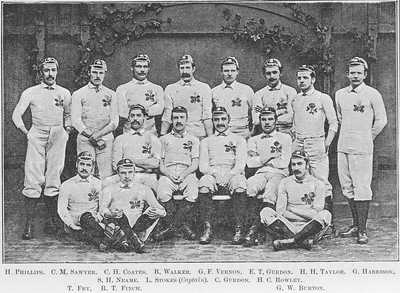
The start of the competition that lead to the Six Nations was in 1883, but back then it was simply called the Home Nations. This was contested between England, Ireland, Scotland and Wales.
It was in 1910 when the structure of the tournament changed seeing the addition of France into the mix, remaining in competition until 1931. Political turmoil in the lead up to World War II started to take its toll and in turn, the ability to travel became almost impossible. From 1932 to 1939, the tournament switched back to the Home Nations, with just 4 teams taking part.
In 1947, following the conclusion of the Second World War, France were added back into the mix and again it was known as the Five Nations. France’s first individual success in the tournament finally came in 1959, but they had tied for first on two other occasions, in 1954 and 1955. This would cement their place in the tournament and put to bed any doubters that claimed they had no place within the original Home Nations tournament.
This structure would run successfully up until 2000, where it was decided that expansion was needed to include an ever-improving Italian team. As there was little international rugby talking part for teams outside of the Five Nations, Italy’s application was accepted and so the tournament became the Six Nations.
Since then there have been calls to expand the tournament even further, with the likes of Romania and Georgia both being touted for inclusion due to relative success in previous World Cup campaigns. But, it’s strongly argued that both teams would fail to match even the class of Italy within the completion and would mean an increase in both travel and the timeframe of the already jam-packed Six Nations.
England
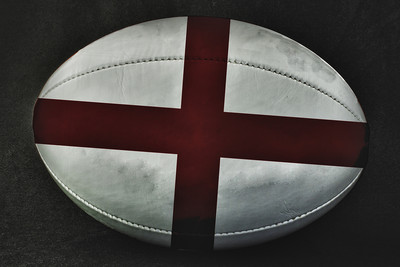
England are undoubtedly the most successful country in the Six Nations. They’ve won it more times than any of the others and have also won more Five Nations than any of the others as well. They’ve been the stronger team for the longest period within the tournaments history and we think fair to say that they are the team that everyone looks to beat, even today.
Their modern-day dominance was probably only overshadowed by the success they had in the early nineties, more specially 1992. This season they were able to win back to back Grand Slams, something that had never been done before. They also manged to rack up a record points amount and conceded just four tries throughout the whole tournament.
The 2003 win was probably more important for them though and not just because they managed to win another Grand Slam. The Six Nations victory saw them completely dominate their opponents in just about every match, but it lead to be the springboard to lead Clive Woodward’s team to victory in the 2003 World Cup and give England their one and only World Cup win.
Wales
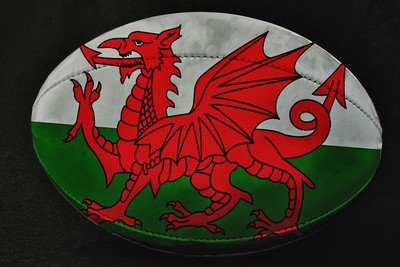
Wales have always been a bit of a yo-yo team in rugby, unlike the more consistent English. But, there have been times here they have been able to dominate unlike any other team, none more so than throughout the 1970’s. In this era, they had eight wins or ties for first places from just ten tournaments, a run of form that has rarely been matched before or since. They had the likes of Gareth Edwards, Gerald Davies, Steve Fenwick and Barry John, to name just a few.
They weren’t able to enjoy a similar run of success until the mid 2000’s and even then, it wasn’t really on the same scale. They were able to win the Grand Slam in 2005, which really got people excited about Welsh rugby again, following this feat with Grand Slam victories in 2008, 2012 and 2019, plus winning the 2013 and 2021 Six Nations Trophy as well.
Scotland
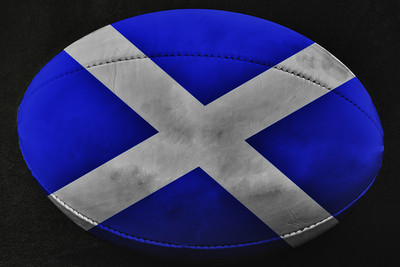
Scotland have struggled since the start of the Six nations and unfortunately are better known for their collection of four wooden spoons than any major trophies to speak of. The Six Nations as a whole haven’t been too kind to the Scots, but positive results in recent tournaments look to see Scottish rugby back on the rise.
Whilst the glory days of Scottish rugby are to be looked back not forward on, they have had spells where they have shown what they are made of, none more so than in 1990. The 1990 Five Nations would prove to be a high point where they managed to overcome strong French dominance to win the Grand Slam, after falling just short four years previous.
Ireland
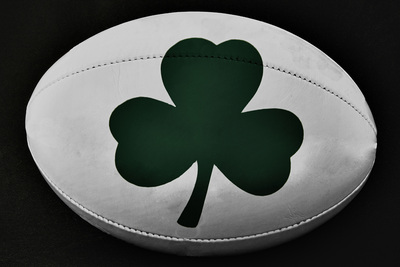
The Irish have been able to enjoy a good amount of success in more recent years within the Six Nations. They’ve had Grand Slam wins in 2009, 2018 and 2023, alongside back to back titles in 2014 and 2015 and in 2023 and 2024, producing some amazing talents in that time. None more so than the legend that is Brian O’Driscoll. He won player of the tournament on three separate occasions, highlighting his importance to the team.
The recent move to the Aviva Stadium has seen another improvement in Irish rugby. The stadium has seen the move away from the previous Landsdown Road and allowed them to play at the legendary Croke Park whilst the stadium was being built.
France (Joined 1910)
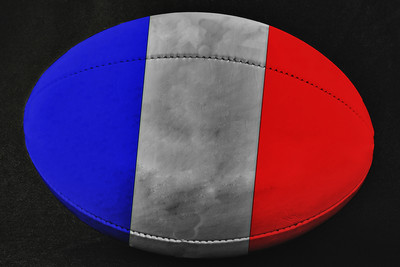
It took a long time for France to really find their feet within the tournament. In fact, they hold the record for the longest stretch without a Championship win, spanning 43 years from 1910 to 1953.
But, whilst the early days were certainly tough, they are more than established these days and are regarded as one of the best in the world. Their best spell came in the Five Nations, throughout the 1980’s. From 1981 to 1989 they were either winners or tied 1st for the tournament six times, with two Grand Slam wins in that time as well.
Italy (Joined 2000)
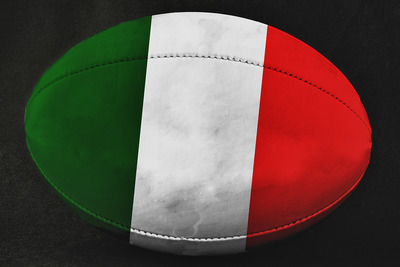
Italy have been included since the start of the Six Nations, obviously, in 2000. The country were a controversial inclusion and whilst they have struggled on paper, it’s been undoubtable that they have improved over the years, especially given their recent World Cup runs as well.
With just 15 victories from 125 games, it’s often been a long slog has the Six Nations, but with so few wins, it’s made the games they have won that little bit sweeter. They’ve also manged to produce some truly world class players, such as Diego Dominguez, Sergio Parisse and Martin Castrogiovanni, to name just a few.